#sim-deok
Explore tagged Tumblr posts
Text
The History of Korean Female Soloists from the 20th Century: Episode 3/?
The third episode of 'The History of Korean Female Soloists from the 20th Century' highlights prominent Korean musicians who achieved fame in the early 20th century, during the period of Japanese occupation.
The historical documentation related to these artists is frequently unreliable, largely due to the fact that their contributions occurred almost a century ago, before the Korean War, leading to the loss or unavailability of essential records.
Yun Sim Deok (윤심덕; 尹心悳)
This episode is intended for a mature audience, so I want to issue a warning before proceeding, as it will discuss the topic of self-exit. This episode revisits the life of the renowned soprano Yun Sim-deok. In my initial discussion, the information presented was somewhat limited, as I had only recently begun my exploration of Korean artists. This revised episode will provide a more comprehensive and detailed account of her life and her romantic relationship.
"You poor soul, passionate about life, you are a dancer on the sword" - From Yun Sim-deok’s ‘In Praise of Death'

The inaugural official female vocalist and soprano on the Korean Peninsula, she is renowned for her signature piece, "Ode to Death." Her relationship with playwright Kim Woo-jin has garnered significant attention, particularly due to its tragic nature, as it reflects the cultural phenomenon in the Korea Strait where couples, disillusioned by their inability to fulfil their love, choose to end their lives together. This narrative, akin to Japan's concept of Shinju (心中), sparked widespread speculation and controversy during that period.


Life and Career
Yun Sim-deok (윤심덕; 尹心悳), also known by her nickname Su-seon (水仙), was born on July 25, 1897, in Pyongyang and passed away on August 4, 1926. She was the second of four children in a family of musicians, with her parents serving as pastors at the Namsanjae Church. Her family included her older sister Yun Sim-seong (윤심성), a soprano, her younger brother Yun Gi-seong (윤기성), a baritone, and her younger sister Yun Seong-deok (윤성덕), who specialized in piano, highlighting the musical environment in which she was raised.
In 1907, Yun Sim-deok commenced her education at Jinnampo Private Girls' School, subsequently attending Pyongyang Soongui Girls' School and Pyongyang Girls' High School. She completed her studies at the Gyeongseong Girls' High School (京城女高普) Teachers' Training Institute in 1918. After graduation, she served as a music teacher in Wonju, Gangwon Province, for about a year before being chosen, alongside Han Ki-ju (한기주; 韓琦柱), for a government-funded program to study at the Tokyo Music School in Japan in 1919. With the assistance of Sekiya, the director of academic affairs, she enrolled in the vocal music department, supported by funds from the Japanese Government-General of Korea. While studying in Tokyo, she resided in Mokpo (木浦), and although initially classified as a special exchange student, her enrolment in the Class A Teacher’s Course (甲種師範科) indicates a shift in her aspirations towards becoming a music educator rather than solely focusing on vocal music.

Notably, Yun Sim-deok's younger sister, Yun Seong-deok (윤성덕)(1903-1968), mirrored her sister's trajectory by also entering the field of music education, eventually becoming a professor in the music department at Ewha Woman’s University. This familial connection underscores the significant impact of their upbringing on their professional paths, contributing to the broader landscape of music education in Korea during that era.
On December 19, 1920, she took part in a concert commemorating Beethoven's 150th anniversary. In 1921, while collaborating with traveling theatre groups like Dongwoohoe, which consisted of students from Tokyo, she performed solo pieces such as "Rose" and "Twilight Stream" prior to the play <Kim Yeong-il's Sa>. During this time, she developed a friendship with Kim Woo-jin (김우진) , the son of affluent Kim Seong-gyu, who was pursuing English Literature at Waseda University. This relationship reportedly evolved into a romantic one, and their subsequent mysterious disappearance sparked speculation, although their friends insisted it remained platonic.
After completing her education, she returned to Korea, having fallen in love with him. Following her music studies in 1922 and a year as an assistant teacher, she debuted as a soprano with a solo concert at the Jongno Central Youth Centre. Upon her return to Korea in June 1923, she held a vocal recital at the Janggokcheonjeong Public Hall on July 7. Although she achieved recognition through national tours and performances, she encountered financial hardships while working as a private instructor to support her family. While living as the concubine of a wealthy man named Lee, she received financial assistance that enabled her to send her younger sibling, Yun Seong-deok, to study in the United States. Eventually, she relocated to Harbin, where she embraced an independent lifestyle. Despite her acclaim for a powerful vocal ability, sustaining a career in Western classical music proved to be difficult, prompting her to shift towards pop music and acting. This transition ultimately led Yun Sim-deok (윤심덕) to become a prominent figure in Seoul's concert scene, leveraging the growing fascination with Western music.

After returning from her studies in Japan and settling in Mokpo to care for her two siblings, Kim Woo-jin (김우진) harboured ambitions of studying abroad again, motivated by the New Theatre Movement. However, he faced disappointment upon receiving a letter from her after her return from Harbin, marking their reunion during a time of heightened public interest in her shift from a musical troupe to the theatre group Towolhoe. Despite her parents' objections to her theatrical ambitions, she performed in the play Dongdo (東道) and maintained correspondence with Kim Woo-jin, who offered her financial support. Subsequently, she left Towolhoe to form a new theatre group, Baekjohoe (白鳥會), with her colleagues. When the theatre movement faced difficulties, she secretly met with Kim Woo-jin in Mokpo before traveling to Seoul, where they found comfort in each other's company until his departure for Tokyo. Later, she journeyed to Osaka (大阪) with Yun Seong-deok, who was heading to the United States for piano studies, to record for Ildong Gramophone Company, where she reunited with Kim Woo-jin once more. Among the songs she recorded for Ilchuk (日蓄) Records, accompanied by her younger brother on piano, was "死の讚美" (Death Praise Beauty).
She performed at the Yeonjeon Concert on July 20, 1923, and participated in the Gyeongseong Music Band’s Autumn Concert on October 13. Her appearances continued with the Myodong Praise Team's music competition on October 18, followed by Gyejeongsik's farewell concert on October 19, and the Yeonhui Professional Music Concert on May 11, 1924. Additionally, she took part in the Gyeongseong Medical College Music Department's concert on June 14 and the Joseon Women's Education Association's famine sympathy concert on October 18, showcasing her versatility and commitment to her craft.
During her tenure as a music instructor at Gyeongseong Normal School, she established herself as a prominent vocalist through her concert performances. In 1925, she made a significant career shift by joining the theatre company Towolhoe, where she gained further acclaim as a singer, making impactful television appearances and recording music. Her performance of "Hymn of Death" particularly struck a chord with audiences, enhancing her reputation in the entertainment industry.


After an extensive period with Towolhoe, she redirected her career towards the music sector, achieving notable success through her recordings and broadcasts. Her fame escalated with the release of "Ode to Death" by Ildong Gramophone Company, which received considerable attention with 100,000 copies containing the song were sold, especially after her premature death. Upon her return to Korea, she was celebrated as the queen of the Joseon Orchestra, although she later transitioned back to acting in 1926. Her contributions were recognized at the New Year's Music Concert by Our Boys' Association in February 1926, and her performances were highlighted in various publications, reflecting both her talent and the controversies surrounding her artistic choices.
Her journey into the world of singing commenced in Japan, where she was motivated by Lee Se-gi (이세기), the manager of the Gyeongseong branch of Osaka Ildong Records (Jevipyo), leading to the recording of eleven songs. Following the departure of her younger brother to the United States, she and Kim Woo-jin (김우진) were on their way back to Korea on August 4, 1926, aboard the ferry Tokuju Maru from Shimonoseki when they both leaped into the Genkai Sea. The Ilchukgwa Jebiyo Joseon Record features approximately 20 songs, including Western compositions such as “Net Dream” (Old Dream), “Ttanup River” (Danube River), “Maggie’s Memories,” “Smiling Laurel Flower,” and “The Boat Leaves,” all accompanied by Yun Seong-deok on piano. Unfortunately, her life took a tragic turn when she and her partner, Kim Woo-jin, ended their lives by jumping into the Genkai Sea, marking a sorrowful conclusion to her complex artistic journey.
Kim Woo-jin (김우진; 金祐鎭)
The name Kim Woo-jin may also be rendered as Kim U-jin in English translations; however, I will refer to him as Kim Woo-jin for the duration of this episode. I will not discuss his interaction with Yun Sim-deok in detail, as this topic has been covered in both the previous and subsequent sections.
Kim Woo-jin (김우진) was a significant figure in Korean literature, recognized as a playwright and theatre theorist during the Japanese colonial era, with notable works including "Shipwreck" and "Wild Boar/Pig." He was also a poet, essayist, and dramatist, distinguished as the first professional literary critic in Korea. His contributions to literature, particularly the poem "Theory of Life and Death" (1926) and the play "Wild Pig" (1926), have garnered attention.

Despite his literary accomplishments, Kim's work remained largely unacknowledged until the late 1970s, with a posthumous publication in 1983. His deep understanding of Western literature and insightful engagement with Western philosophy have since been recognized as pivotal to his legacy.
Life and Career
Cho-seong (焦星), also known as Susan (水山), was born on September 19, 1897, in Jangseong-gun. He was the son of Seong-gyu (星圭), the governor of Jangseong County, and his lineage included a grandfather who served as a ceremonial official and landowner. After completing his elementary education in Mokpo, he relocated to Japan, where he attended Kumamoto Agricultural School and later enrolled in the preparatory course at Waseda University (早稲田大学), ultimately graduating from the English Literature Department in 1924.
From an early age, he aspired to be a poet and began composing poetry during his time at Kumamoto Agricultural School. His passion for the performing arts led him to establish the Theatre Research Group, Geukye Art Association, alongside peers such as Jo Myeong-hee (조명희) and Hong Hae-seong (홍해성) in 1920. In 1921, he founded the Dongwoohoe Touring Theatre Troupe, managing performance costs and directing productions, including a translation of Dunsany's one-act play, “The Splendid Gate.” After returning to Mokpo post-graduation, he served as president of Sangseong Hapmyeong Company while producing a significant body of work, including 48 poems, five plays, and approximately 20 critiques. However, personal and societal challenges culminated in his tragic suicide on August 4, 1926, when he jumped into the Genkai Sea with soprano singer Yun Sim-deok (윤심덕).

Waseda University students in 1916
He was raised in a conservative Confucian household, yet he became deeply engaged with Western modern philosophy. Influenced by thinkers such as Nietzsche and Marx, he developed a distinct ideological framework that embraced socialism in the wake of the Russian Revolution. This intellectual journey led him to resonate with the expressionism of Strindberg and the reformist theatrical ideas of Shaw, ultimately fostering a rejection of traditional artistic conventions.
The ideological underpinnings of his works and the circumstances surrounding his suicide warrant examination. His poetry, particularly in pieces like "Death," "Theory of Life and Death," and "Theory of Death," reflects a profound denial of reality and a call for reform. Similarly, his plays reveal an autobiographical narrative intertwined with contemporary societal struggles. Notably, "The Disillusionment of Poet Du-deok" illustrates the clash between traditional and modern ethics, while "Lee Yeong-nyeo" employs naturalistic techniques to portray the harsh realities faced by the impoverished in Mokpo. His notable works, "Shipwreck" and "Wild Boar," stand as pioneering examples of expressionism in Korean literature, showcasing avant-garde experimentation during a time dominated by melodrama.
This work is notably distinguished by its profound exploration of social reform ideas and its ethereal stylistic approach. The author described this piece as his 'march of life,' imbuing it with the qualities of a clinical analysis conducted by a progressive thinker.

Bust of Kim Woo-jin at Mokpo Literature Hall.
Among his numerous insightful critiques are notable essays such as “On the So-Called Modern Theatre,” “The Story of the Free Theatre,” “The Life of Saong,” and “On Western and American Playwrights.” His critique “Seeing Artificial Humans at the Tsukiji Small Theatre” exemplifies his theatrical analysis. Furthermore, in “I Encourage Creation,” he methodically presented expressionism as the most fitting creative approach for Korean writers seeking to transcend traditional norms. His candid perspective on literature is evident in essays like “Bury the Literature of Lee Gwang-su” and “Ego-Viewed Class Literature and Critics,” where he rigorously challenged enlightenment nationalism and humanitarian ideals. In “A Word to the Korean Literature World Without the Korean Language,” he advocated for the revitalization of the pure Korean language, drawing on Western examples, and called for the establishment of a new literary framework, the creation of dictionaries, and the preservation of oral traditions, folk songs, and children’s songs. He also emphasized the need for a distinct poetic rhythm, the translation of foreign literature into Korean, and the increased accessibility of newspapers and magazines.
He was an innovative playwright who transcended the conventional literary landscape of his era, which was mired in enlightened nationalism, humanitarianism, and sentimentalism. By effectively channelling the struggles of his time into his plays, he distinguished himself as the sole playwright to directly engage with expressionism in his artistic endeavours.
Furthermore, he is recognized as a critic who contributed significant theoretical insights to the contemporary theatre and literary scene, drawing from his vast knowledge and ground-breaking critical viewpoint. Additionally, he played a crucial role as a theatre activist, being the first to spearhead the new theatre movement.

The complete works of Woojin Kim, published in 3 volumes in 2000.
A bust commemorating Kim Woo-jin is situated in the Kim Woo-jin Hall, part of the Mokpo Literature Hall established by Mokpo City.
Following their deaths, little information has emerged about Kim Woo-jin and Yun Sim-deok. Unlike Yun, who remained unmarried, Kim had a family, with his son Bang Han (방한) becoming a professor at Seoul National University. Kim Woo-jin's grave, reportedly unmarked by a body, is believed to be on Molmoe Mountain in Muan-gun, Jeollanam-do. Mokpo City later inaugurated the Mokpo Literature Hall and the Kim Woo-jin Hall to celebrate his literary contributions, alongside local figures such as Park Hwa-seong (박화성), Cha Beom-seok (차범석), and Kim Hyeon (김현). In 2000, a three-volume collection of his works was published. The legacy of Yun Sim-deok, Kim's beloved, is preserved through a faded photograph and her haunting rendition of "Praise of Death," (사의찬미) which evokes a sense of nostalgia and blurs the lines between traditional ballads and contemporary music.
Love Life
What is love? - Love is a connection between a man and a woman who share mutual feelings and enjoy each other's company.

A scene from the 1991 film [Ode to Death] starring the late actor Lim Sung-min (left) and Jang Mi-hee. 배우 고(故) 임성민(왼쪽)과 장미희 주연의 영화 [사의 찬미]의 한 장면, 1991년 작품이다.
Modern Art Pioneers Sacrificed to Convention
Artistic sympathy that emerged from trials, a relationship that goes beyond a simple affair, a catalyst for free love and popular art, leading Koreans to modernity.
The term gained popularity in Korea during the 1910s, particularly after its mention in Cho Joong-hwan's (조중환) adapted novel, "Ssangokru," (쌍옥루) which was serialized in "Maeil Shinbo" (매일신보) in 1912. Prior to this, romantic relationships were typically arranged by parents during the Joseon Dynasty. The story of Gapdol and Gap-soon, who secretly met at a watermill, illustrates how such love was often frowned upon, causing embarrassment to families and communities.

Ssangokru: Cho Jung-hwan's translated novel book cover
The emergence of modern love challenged these traditional norms, allowing individuals to take centre stage in their romantic narratives. The 1920s marked a significant shift towards free love in Joseon, fuelled by the exchange of heartfelt letters. Young lovers, caught in the throes of passion, eagerly penned love letters day and night, eagerly awaiting responses. The popularity of guides on writing love letters soared, with many considering love an essential part of life.
This surge in correspondence also played a crucial role in developing the postal system, which saw a dramatic increase in letter exchanges from just 137 in its early days to an astonishing 70 million by 1925. However, the era also witnessed tragic consequences, as the number of suicides linked to unrequited love rose sharply, capturing public attention and making headlines, especially when involving well-known figures like Yun Sim-deok and Kim Woo-jin.
Why did stars and rich people throw themselves into the sea?

The protagonists of an impossible love story, Woojin Kim and Sim-deok Yoon (right). The two ended their lives by throwing themselves into the Genkai Sea together.
At 4 a.m. on August 4, 1926, the Tokuju Maru, a ferry departing from Shimonoseki, Japan, was en route to Busan, navigating past Tsushima Island. A porter on duty noticed that the door to first-class cabin number 3 was ajar, raising his suspicions about a potential passenger wandering on deck at such an early hour. Upon entering the cabin to investigate, he discovered a letter resting atop a bag, addressed to "Po-i," which prompted him to open it.
The contents of the letter expressed an apology and a request for the will to be mailed to a registered address. Accompanying the note was a 5-won bill, seemingly a gift, alongside a suicide note indicating a desire to return home. Alarmed by the implications, the porter rushed to inform the captain, declaring an emergency. The ferry was halted, and a search ensued both inside and outside the vessel, yet no sign of the passenger from cabin number 3 could be found. It appeared she had likely taken her own life, though the exact time and location of the act remained unknown.
The cabin was left with a woman's wallet, a man's gold watch, 160 won in cash, and various personal items. To ascertain the identity of the missing passenger, the captain referred to the passenger list. The records indicated two individuals: Kim Su-san, a 30-year-old male from Bukgyo-dong, Mokpo, and Yoon Su-seon, a 30-year-old female residing at 73 Iljeong-mok, Seodaemun-jeong, Gyeongseong.
Upon the Tokuju Maru's arrival in Busan, the captain promptly notified the authorities regarding the incident. The identities of the two individuals involved were quickly uncovered. The male was identified as Kim Woo-jin (김우진;金祐鎭, 1897-1926), the eldest son of the affluent Kim Seong-gyu from Mokpo, recognized for his contributions as a playwright and theatre critic. He completed his studies in the English Department at Waseda University in Japan in 1924 and subsequently took on the role of president at Sangseong Partnership Company, which oversaw the family's assets. In line with societal norms of the era, he married at a young age and had a son and a daughter.
The female involved was none other than Yun Sim-deok (윤심덕; 尹心悳, 1897-1926), celebrated as the premier soprano of Joseon. Hailing from Pyongyang, she graduated from the education department of Gyeongseong Girls’ High School and was chosen as a government-sponsored student to study at the Tokyo Music School, returning in 1923. Her exceptional talent as a vocalist garnered significant attention, leading to television appearances and album recordings that solidified her status as a prominent singer. Her life and career were closely followed by the public, making her a notable figure of her time.

The incident in the Genkai Sea quickly captured global attention, as the media eagerly reported on the scandal involving prominent figures. The intersection of celebrity and wealth consistently draws public fascination, particularly given that the man was married. This event marked a historical moment as it was the first recorded instance of a Korean committing suicide on a ferry due to romantic despair. By August 5, major newspapers, including [Maeil Shinbo], extensively covered the story, sustaining public interest. The release of Yun Sim-deok’s album by the Nitto Gramophone Company of Japan on August 29 further amplified the media frenzy surrounding the affair.
The intrigue surrounding the affair between Yun Sim-deok and Kim Woo-jin captivated public interest. Media narratives suggested a romantic connection between the two, yet the complexities of their situation were underscored by Kim's status as a married man with familial responsibilities. Their tragic decision to end their lives together reflected a profound sense of despair, complicating the notion of their relationship, which, while classified as an affair, was deeply influenced by the societal norms of their time.
The term "new women" referred to those who had received modern education, both locally and abroad, and who often found themselves in social circles with married men like Kim Woo-jin. During this period, early marriage was prevalent, with many young men marrying before pursuing further education abroad. Reports indicated that a significant portion of male high school students were already wed, leaving their families behind to continue their studies. As these men matured, their perspectives often shifted, leading them to question the marriages arranged by their parents and seek relationships with new women.
The case of Chang-sun illustrates the societal pressures of the time. At just fifteen, he was compelled to marry under traditional customs, a decision he accepted without question due to his youth. However, as he progressed through his education, his understanding of love and relationships evolved, prompting him to reject the notion of his marriage, which he perceived as devoid of affection or mutual understanding. This transformation highlights the broader cultural shifts occurring in the 1920s, as individuals began to challenge established norms regarding marriage and personal agency.
A young married man with a wife and children meets a new woman, an 'educated woman'

Yun Sim-deok's posthumous album [Ode to Death].
Park Jun-pyo, a prominent novelist of the 1920s and 1930s, explores the psychological turmoil of a young married man enamoured with another woman in his 1924 novel, *Fate*. The protagonist, Chang-soon, departs from his hometown to pursue a degree in Literature at Gyeongseong University, where he cultivates modern ideals. He rejects the arranged marriage to Jeong-hee, as dictated by his parents, and instead aspires to a romantic relationship with Yeong-sook, an English literature student. Upon his return home after graduation, Chang-soon grapples with the desire to leave behind the constraints of traditional marriage for a progressive family life with Yeong-sook, yet the prospect of divorce looms as a source of profound distress.
The internal conflict Chang-soon faces is exacerbated by societal expectations and familial opposition. He anticipates fierce resistance from both his family and in-laws, particularly given that his wife has borne him a child. The thought of the ensuing chaos fills him with dread, as he foresees the scorn and judgment from a society steeped in ignorance. This emotional burden weighs heavily on him, leading to feelings of guilt and sorrow for both his wife, who remains unaware of his true sentiments, and the innocent child who is oblivious to the turmoil surrounding their family.
The original novels typically mirrored the prevailing values and preferences of society. In Park Jun-pyo's work, [Fate], the protagonist ultimately envisions a life of liberated love but grapples with the weight of divorce, ultimately returning to the family awaiting him. This conclusion resonates with the sentiments of the public. Conversely, those who sought to dissolve early marriages in favour of a new romantic partner faced significant societal backlash, as such choices were met with considerable disapproval.
The concerns of Kim Woo-jin and Yun Sim-deok may have stemmed from this societal context. The name 'Su-san' (水山) found on the passenger list of the Tokuju-maru was a pseudonym for Kim Woo-jin, while 'Su-seon' (水仙) was a term he affectionately used for Yun Sim-deok, indicating her closeness to him. Their relationship began in 1921 during their studies in Tokyo, where they became acquainted through a theatre company formed by the Japanese students' association, with Kim Woo-jin directing and Yun Sim-deok performing vocal solos.

The tour conducted by the Dongwoohoe throughout Joseon proved to be highly successful, spanning 14 regions over a period of 20 days. The troupe received enthusiastic receptions at each location, with their performances of plays and lectures garnering positive feedback. Notably, Yun Sim-deok's solo performance stood out, capturing significant attention. Anticipation for her return to Korea as a trained female vocalist increased, reflecting a growing global interest in her artistry.
Kim Woo-jin developed feelings for a female peer of his age, characterized by his composed and gentle demeanour. In contrast, Yoon Sim-deok's vivacious and generous nature earned her the affectionate nickname 'Wal-nyeo.' She frequently visited Kim Woo-jin's boarding house in Tokyo, engaging in discussions about music and literature while sharing profound personal narratives. This exchange fostered a deep bond of trust and affection between them, transcending the conventional boundaries of a mere romantic affair.
In the summer of 1922, Yun Sim-deok completed her studies at the Tokyo Music School and began to earnestly pursue a career as a vocalist. The journey of pioneers is often fraught with challenges, particularly in the realm of vocal music, which was not yet widely recognized in Joseon. The prospects of sustaining a livelihood as a soprano were bleak. To support her in this formidable endeavour, Kim Woo-jin (김우진) extended an invitation to Yun Sim-deok (윤심덕) while she was in her hometown of Pyongyang. He was vacationing in Mokpo and proposed that she come to perform at a family concert.
The invitation from Kim Woo-jin included train tickets for Yun Sim-deok and her two younger siblings. Her sister, Yun Seong-deok, was studying piano at Ewha Haktang, while her brother, Yun Gi-seong, was pursuing vocal music at Yonhui College. Although the prospect of performing might have felt overwhelming, the familial context of the concert alleviated some of her anxiety. Accepting the invitation, Yun Sim-deok travelled to the residence of Mokpo's wealthiest individual, where she showcased both Western and vocal music. During this visit, she also had the opportunity to meet Kim Woo-jin's family, including his parents, siblings, wife, and children.
A perverse interest in new and unfamiliar stars


Photo 1 - Yun Sim-deok (front row, right, wearing white) during her time at Ueno Music School in Tokyo. Photo 2 – What Ueno Music School looks like now.
Yun Sim-deok returned to her studies in vocal music for an additional year before making her way back to Korea in May 1923, marking the beginning of her journey as a soprano. At that time, the landscape of female vocalists in Joseon was sparse, particularly following the departure of Im Bae-se to the United States. The concept of a soprano was largely unfamiliar to the public, resulting in limited recognition and audiences for her performances. Initially, she took on a part-time lecturing role at Gyeongseong Girls’ High School, biding her time for the opportunity to perform on a concert stage.
An opportunity soon presented itself, leading to Yun Sim-deok's debut on June 26 at the third anniversary concert of the Dong-A Women's Association, thus launching her career as a soprano. While Im Bae-se was noted for her "voice like a cuckoo," Yun Sim-deok (윤심덕) captivated audiences with her unique sound, described as "the sound of beads rolling on a jade tray." Her popularity surged, and she became a frequent performer in the Gyeongseong area, gracing the stage three to four times a month. She received accolades such as "a first-class vocalist who intoxicates audiences" and was celebrated as "Joseon's best vocal group."

Despite the nature of the event being a concert, the compensation she received was minimal. Yun Sim-deok's financial circumstances were deteriorating, particularly after her parents relocated from Pyongyang to Gyeongseong in early 1924, merging their household with hers. This shift placed the burden of supporting her family, including her younger siblings, squarely on her shoulders. Her earnings from performances were insufficient for this responsibility, prompting her to seek additional income through private tutoring, yet the demands proved overwhelming.
Compounding her struggles was the negative scrutiny she faced from the public. Critics targeted her vibrant demeanour and physical appearance, expressing discomfort with her tall and slender figure. As a figure of novelty, Yun Sim-deok encountered resistance from a society that often recoils from the unfamiliar. With her rising fame came an increase in gossip and personal attacks, illustrating the paradox of public admiration intertwined with harsh judgment.
Yun Sim-deok's narrative of romantic freedom soon faced significant scrutiny. Her involvement with composer Hong Nan-pa, the rejection of musician Chae Dong-seon's affections, and the tragic demise of writer Park Jeong-sik due to unrequited love fuelled a torrent of gossip. In an era when even unfounded rumours were readily disseminated by the press, the escalating scandal tarnished the public perception of female vocalists, marking the onset of a societal witch hunt against them.
Amidst the turmoil, Kim Woo-jin emerged as a source of solace for Yun Sim-deok. A graduate of Waseda University’s English Literature Department in the summer of 1924, he returned to his hometown of Mokpo with aspirations to transcend traditional literature and establish Western modern drama in Joseon. However, his ambitions were met with resistance from his father, Kim Seong-gyu (김성규) , a prominent figure who had held various magistrate positions and amassed considerable wealth, expecting his son to inherit the family legacy.
Conforming to his parents' expectations, Kim Woo-jin assumed the presidency of Sangseong Partnership Company, which managed the family's assets. While others may have envied his position, he found it stifling. His wife, the daughter of a Confucian scholar, struggled to comprehend his desire to abandon the family business for a career in theatre, leaving him increasingly isolated. This emotional distance intensified his yearning for Yun Sim-deok, as their relationship flourished amidst the challenges they faced, rooted in a shared artistic vision and a mutual rejection of societal constraints.
Art and love served as a revitalizing force in their otherwise desolate lives, yet they remained powerless against the rigid traditions of Joseon, a society deeply entrenched in its customs, particularly regarding foreigners. The more they endeavoured to resist external influences, the more they found themselves ensnared by the harsh realities that plagued the early proponents of modern art, who faced relentless challenges from all directions.
In early 1925, it was rumoured that Yun Sim-deok had become the mistress of the affluent Lee Yong-mun (이용문) from Gyeongseong. Her visits to his residence, ostensibly for financial assistance to support her brother Yun Gi-seong's (윤기성) education in the United States, led to scandalous gossip. The rumours proliferated rapidly, with the elite mocking her, claiming she masqueraded as an artist while compromising her integrity for monetary gain. They suggested that wealth blurred the lines between a wife and a concubine, reducing her to a mere servant who performed for the entertainment of wealthy patrons.

Critics condemned Yun's recent behaviour, asserting that regardless of one's profession—be it artist, entrepreneur, or homemaker—one should uphold a respectable image. They urged her to embrace a virtuous life, especially with whispers of her potential departure abroad. The sentiment expressed in the publication 'On the Yun Sim-deok Incident' in March 1925 reflected a broader societal expectation that her artistic pursuits should not come at the cost of her dignity and reputation.
The rain shower is currently best avoided. Yun Sim-deok, wrongfully accused of witchcraft, embarked on a solitary journey to Harbin, where Pastor Bae Hyeong-sik, a figure she had admired since childhood, was engaged in missionary work and the independence movement. For six months, she severed all ties and lived in seclusion at Pastor Bae’s residence. It was only upon receiving a telegram informing her of her older sister Yun Sim-seong’s husband’s death that she decided to return to Gyeongseong.
Resuming her activities as a vocalist proved challenging. Yun Sim-deok participated in a radio broadcast being trailed by the Post Office of the Government-General, where she sang, recited poetry, and hosted segments, despite the fact that Korea's first Gyeongseong Broadcasting Station had yet to officially launch. Additionally, she received an invitation to record a gramophone record featuring popular songs. Setting aside her pride as a vocalist trained abroad with government support, Yun Sim-deok embraced the role of a popular singer, a position that had previously been regarded with disdain.
Hurt by the scandal, he tried to become a stage actor

The Genkai Sea as seen from Nagoya Castle, Japan.
During the early 20th century, gisaeng were prominent figures in the entertainment industry, engaging in television appearances and album recordings. The establishment of the Gyeongseong Broadcasting Station in February 1927 marked a significant development, as it initially employed around 100 gisaengs, thereby laying a crucial foundation for the broadcasting landscape. The Japan Gramophone Company released the first album featuring popular songs in 1925, with gisaengs like Kim San-wol (김산월) and Do Wol-saek (도월색) traveling to Japan to record notable tracks such as “This Windy World,” “Sided Bangcho,” and “Jang Han-mong-ga.” However, some gisaengs resisted the allure of fame, expressing their reluctance to participate in what they perceived as a demeaning spectacle.
The cultural landscape underwent a radical shift in 1926 when Yun Sim-deok joined the Towolhoe Theatre Company as an actress, following a suggestion from Kim Woo-jin. His critique, influenced by Strindberg, posited that expressionism aptly captured the dire social realities of Joseon, advocating for a new theatrical movement focused on smaller venues. By aligning herself with the Towolhoe Theatre Company, which championed modern theatre, Yun Sim-deok aimed to contribute to the evolution of Joseon’s artistic expression through innovative performances that resonated with contemporary societal issues.
Despite facing vehement opposition from her family, who viewed acting as a disreputable profession, Yun Sim-deok remained resolute in her aspirations. She left her home and took refuge in a Japanese inn located in Samjeong-mok, Hwanggeumjeong (Euljiro), where she dedicated herself to honing her acting skills. In a statement to the press, she described her journey as "a bold step to become something in a corner of the newly built Joseon Art Hall with all her might," reflecting her commitment to pursuing her artistic ambitions despite societal constraints.

The actress faced significant challenges throughout her career. The adaptation of the American film "East Road," titled "Dongdo," failed to resonate with audiences, primarily due to Yun Sim-deok's insufficient acting abilities. Although her vocal talent was evident in the opera "Carmen," the production struggled to gain popularity, as it overly depended on her performance. Additionally, the Towolhoe, which sought commercial success, encountered internal conflicts that ultimately led to its disbandment shortly after its release.
The disappointment of her ambitious endeavours, which included sacrificing her familial ties, plunged her into a state of despair. After achieving fame as a singer, she faced renewed criticism stemming from her unsuccessful theatrical pursuits. Yoon Sim-deok shared her anguish with Kim Woo-jin, who felt a profound sense of helplessness and guilt for her suffering, stemming from his conventional advice. This overwhelming burden of responsibility and self-reproach culminated in a tragic decision, as reflected in Kim Woo-jin’s poignant final poem.
Life running through the vast wilderness… 'Praise of Death' syndrome
The paradox of human sentiment is evident in the way individuals often express disdain for the living, only to venerate them posthumously, as if anticipating a resurrection. This phenomenon was notably illustrated in the Genkai-tan Jeongsa incident, where public criticism of Yun Sim-deok ultimately contributed to her demise, yet the same public later mourned her loss and celebrated her legacy through music.
On July 17, 1926, Yun Sim-deok departed from Gyeongseong en route to Osaka, where she intended to record an album with the Nitto Gramophone Company. Accompanied by her younger sister, Yun Seong-deok, who was preparing for studies in the United States, they swiftly progressed through the recording sessions. Upon completion, Yun Sim-deok reached out to Kim Woo-jin in Tokyo via telegram, inviting him to join her in Osaka, marking a moment where both individuals appeared to be reconciling their lives.

Kim Woo-jincompleted his play 'Wild Pig,' inspired by Donghak, after finishing 'The Disillusionment of Poet Du-deok' and 'The Shipwreck.' He had previously composed a will intended for his wife. Meanwhile, Yun Sim-deok crafted the lyrics for 'Hymn of Death,' set to Ivanovich's instrumental music. Despite the president of Nitto Records expressing concerns about the song's sentimental nature, additional recording took place at her persistent request. It is likely that Yun Sim-deok intended 'Hymn of Death' as a form of farewell.
The lyrics reflect a profound existential inquiry: "Life running through the vast wilderness / What are you looking for? / No matter this world or that, this whole life / I hate money, fame, and love." This introspective sentiment underscores the emotional weight of her work, suggesting a deeper commentary on the human condition and societal values.
On August 4, 1926, the Genkai Sea incident captured significant media attention, leading to the release of Yun Sim-deok's posthumous album on August 29. The timing was remarkable, as the album, titled [Ode to Death], resonated with the dramatic events surrounding it, resulting in sales of 100,000 copies—an unprecedented figure at the time. This phenomenon contributed to the establishment of a domestic record market, with phonographs selling rapidly despite their high cost, prompting the opening of stores by Viktor Records and Columbia in Seoul the following year.

The enduring legacy of Yun Sim-deok and Kim Woo-jin remains significant, even as time progresses. Years later, reports surfaced of a sighting of the pair in Rome, prompting Kim Woo-jin’s family to seek validation from the Governor-General regarding the credibility of these claims. In contrast, Yun Sim-deok’s family exhibited a somewhat different response, as articulated by her younger sister, Yun Seong-deok, who was abroad in the United States via Japan during the events in question.
Yun Seong-deok asserted that her family had never declared her sister deceased, attributing such notions to societal gossip. She expressed confusion over the preoccupation with the living or the dead, emphasizing that the judgments of Joseon society often oscillated between praise and criticism of others. This perspective highlights the societal tendency to speculate on the fates of individuals, particularly those in the public eye.
The accounts of sightings in Rome may reflect a romanticized narrative rather than reality, suggesting that Yun Sim-deok (윤심덕) and Kim Woo-jin (김우진) may have perished in the Genkai Sea. While their love was genuine, it was their shared artistic vision that ultimately led to their tragic end. The cultural context of 1926, marked by Yun Sim-deok’s poignant song "Ode to Death" and the screening of Na Un-gyu’s film "Arirang," illustrates the intersection of modernity and popular art in Korea, underscoring the emotional turmoil experienced by these two figures in the realm of modern art.
The next episode will explore the continuation of Yun Sim-deok's narrative, focusing on the events following her death and the impact of her music. Stay tuned for its upcoming release.
#history#korean history#Music history#korean music history#korea#south korea#10s#20s#photography#Yun Sim-deok#Kim Woo-jin#the hymn of death#Praise of death
19 notes
·
View notes
Text



Hymn of Death 1991




7 notes
·
View notes
Text
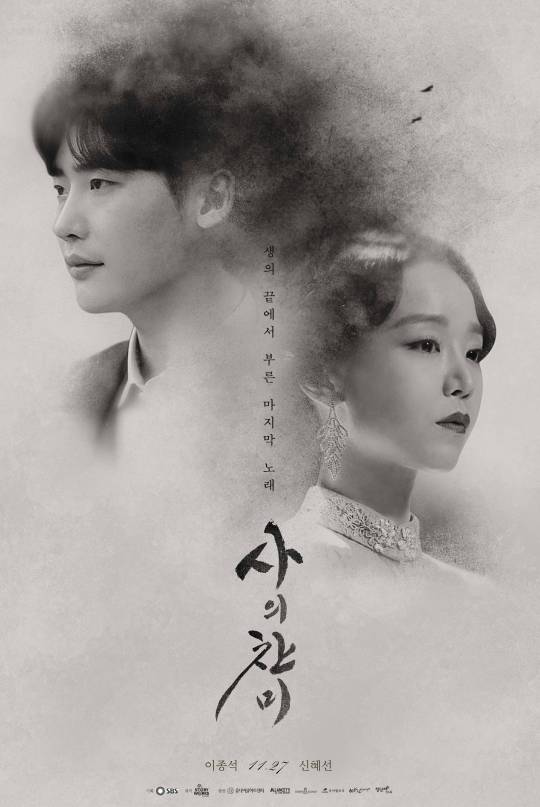

These posters are so drastically sad, just looking at them makes you realize that watching this drama will break your heart.
#The Hymn of Death#사의 찬미#Louvor a Morte#Praise of Death#art poster#poster#lee jong suk#shin hae sun#Kim Woo Jin#Yun Sim Deok#kdrama series#kdrama#k drama#korean dramas#dramas#korean drama#korean actor#korean actress#sbs#drama#kdrama posting#pôsteres#tragic love story
14 notes
·
View notes
Text
Yun Sim-Deok − Hymn of Death
8 notes
·
View notes
Text
Episode 7 Doctor Cha this show continues to be ridiculous, I love how over the top it can be. Like the ridiculous fall last episode. But I need Seung Hi to wake up girl, In Ho is absolutely the worst. Stop letting him drag you down
#doctor cha#I will let ae sim redeem herself#but in ho is the worst#and deok rye is great as well#putting up with her daughter’s terrible mother in law to help out#uhm jung hwa
8 notes
·
View notes
Photo









guimoon: the lightless door (2021) dir. sim deok-geun
2 notes
·
View notes
Text
9 characters i loved in 2023 (kdramas)
tagged by @baekhyunnybyun <33





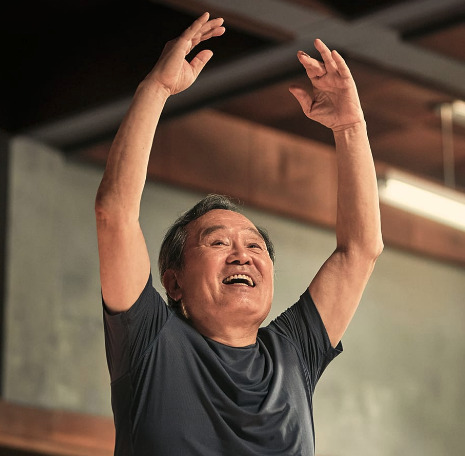



first row: jeon do yeon as nam haeng-seon in crash course in romance (2023) • kim young kwang as han dong jin in call it love (2023) • ryeoun as ha eun gyeol in twinkling watermelon (2023) [mel note: WHAT A CUTIEEE]
second row: chae jong hyeop as park tae joon in love all play (2022) • park ju hyun as park tae yang in love all play (2022) [mel note: the park couple 🥺🫶💕] • park in hawn as sim deok cheol in navillera (2021)
third row: park bo young as jung da eun in daily dose of sunshine (2023) • lee junho as gu won in king the land (2023) • song kang as jeong gu won in my demon (2023) [mel note: did not realize they were both gu wons until right now 😂 two of the lomls]
tagging: @minchanz @dinoboos @woodziecup and anyone else who wants to do this really!! i know there are prob some more kdrama lovers out there hahaha
#tag game#i went back through my spreadsheet and saw i completed 17.5 dramas this year....#not including the handful i started and didnt complete because i didnt like them#this love for kdramas is not going anywhere anytime soon 😂
8 notes
·
View notes
Text
WELCOME TO MY ACCOUNT!!!

-- I'm Reilly!! ( RestlessCrybaby <33 ).
-- Panromantic and pansexual! She/her or any pronouns!
-- I've got a lovely bf! @dumby-elf !! The biggest Death simp, you guys should go and draw his self insert and Death together <33
-- I've got amazing friends!!
-- I'm a huge artist and writer <33!!
-- I'm multifandom!!
-- My birthday is March 3rd, I'm a Pisces!
-- My favorite color is rose gold... I really love pink.
\/ \/ MORE INFO. \/ \/

× WHAT I WILL NOT WRITE. ×
The basics. ( p3dophilia, vore, proship shi, etc )
Sadly, pregnancy and children stuff!! ( personal reasons. )
... More, but that's the basics.
× RULES FOR WHEN I WRITE ×
Please, give me time! And some things will be rushed, I try to put it out there as quick as I can ^^!!
If I don't get to your request, please give me time! Unless I post something stating to resend it, as my tumblr has a habit of deleting my inboxes.
Please, do not be offended if your ask isn't done like the others, I have countless reasons as to why it may not be done like that <33
And in general, have fun with my writing! I try to make sure you guys have enough creative room to let your minds roam free!
Pretty much the same for drawing!!!

♡ SOME OF MY INTERESTS! ♡
☆ Big ones marked with a star!
Writing ! ☆☆☆
Drawing ! ☆☆☆
True crime ! ☆☆☆
Movies !
TV shows !
Anime !
Poetry! ☆
Psychology ! ☆☆☆
Femme fatales! ☆
Vintage cartoons!
Horror! ☆☆☆
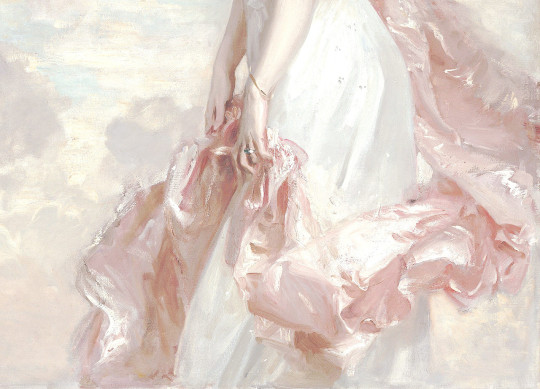
♡ ( SOME ) FANDOMS I'M IN! ♡
(( not all! ))
Puss In Boots: The Last Wish,
MHA
Beavis and Butthead,
Lucifer,
Danganronpa,
Grinch,
American Horror Story,
Beauty and the Beast,
Who Framed Roger Rabbit ( ♡♡♡ )
Pizza Tower,
Tusk, ( ♡♡♡ )
Human Centipede, ( ♡♡♡ )
Chucky,
IT,
Killer Klowns from Outer Space ( ♡♡♡ ),
Goosebumps.
Baldi's Basics.
FNAF.
And more!!

× (( SOME )) CHARACTERS I SIMP FOR!! ×
(( not all!! ))
Jack Horner ( PiB: tLW. )
Katsuki Bakugou. ( MHA. )
Hawks ( MHA. )
TeruTeru Hanamura. ( Danganronpa. )
Mondo Oowada. ( Danganronpa. )
Karl Heisenberg. ( Resident Evil. )
Lady Dim. ( Resident Evil. )
Doc Ock. ( Spider-Man. )
Syndrome. ( The Incredibles. )
Peppino Spaghetti. ( Pizza Tower. )
Tate Langdon. ( AHS. )
Wallace Bryton. ( Tusk. )
Bill Boss. ( Human Centipede 3. )
Martin Lomax ( Human Centipede 2. )
Jang Deok-Su ( Squid Game. )
Slappy the Dummy ( Goosebumps. )
Rodrick Heffley ( Diary of a Wimpy Kid movies. )
Chef. ( South Park. )
Lucifer Morningstar. ( Lucifer on Netflix. )
Sweet Pete. ( Chip 'n Dale: Rescue Rangers. )
The Riddler. ( Batman , 2022. )
Bruno Madrigal ( Encanto 2022. )
Bradley Uppercrust. ( An Extremely Goofy Movie. )
Chucky. ( Child's Play. )
Pennywise. ( IT. ) (( I really love clowns. )
Ayato Aishi ( Yan Sim. )
Peter ( Your Boyfriend. )
John Doe. ( John Doe. ) (( obsessive men :3 ))
And many more.
And I mean many.

× FINAL NOTES. ×
This will be updated every now and again, but for now.
Enjoy.
- Restless Rei's.
20 notes
·
View notes
Text














SOHYE in guimoon: the lightless door (2021), dir. sim deok-geun
2 notes
·
View notes
Text






귀문 Guimoon: The Lightless Door (2021) dir. Sim Deok Geun
0 notes
Text
The Matchmakers
The Matchmakers (Serie 2023) #KimRoWoon #YiHyunCho #JoHanchul #ParkJiyoung #HeekyungJin #LeeHaeyoung Mehr auf:
Serie / 혼례대첩 Jahr: 2023- (Dezember) Genre: Comedy / History / Romantik Hauptrollen: Kim Ro-Woon, Yi-Hyun Cho, Jo Han-chul, Park Ji-young, Hee-kyung Jin, Lee Hae-young, Oh Ye-ju, Park Hwan-hee, Lee Soon-won, Jung Shin-Hye, Sang-Yeon Son, Jeong Seung-gil, Hee-jin Choi … Serienbeschreibung: Die Geschichte des Witwers Joseon Sim Jeong-woo und der Witwe Jeong Soon-deok, die sich zusammenschließen,…

View On WordPress
0 notes
Text
The History of Korean Female Soloists from the 20th Century: Episode 3.5/?
This episode continues the narrative of Yun Sim-deok, focusing on the events following her death and the legacy of her music. It is important to note that this instalment is intended for a mature audience, as it will address sensitive themes related to self-exit.
"행복 찾는 인생들아 너 찾는 것 허무" (To those who seek happiness, your search is in vain) - Yun Sim-deok 'Hymn of Death'
Suspicion of death
During an album recording in Japan, Yun Sim-deok encountered Kim Woo-jin, who was preparing to study abroad in Germany. On August 3, 1926, the two unexpectedly boarded the Tokuju Maru, a ship bound for Busan. The following day, they vanished from the vessel, leading to significant media attention as it was reported as the first 'love affair' (情死) case in Joseon, although the true nature of their relationship remains uncertain.
Three key facts are established: first, both individuals boarded the same ship on August 3; second, on the morning of August 4, their cabin was found empty with only their belongings left behind; and third, a subsequent review of the passenger list revealed their absence. Despite media speculation about a possible suicide pact, no will or evidence was confirmed by family or friends, and no witnesses were present at the time of their disappearance. Consequently, the search for their bodies in the expansive ocean proved futile.

Upon the media's initial coverage of the incident, they reported that "the two individuals embraced and leaped into the sea after leaving a will," a narrative that has persisted over time. The families of Kim Woo-jin and Yun Sim-deok vehemently refuted claims of an "affair," likely motivated by concerns for their family’s reputation. They even contested the notion of suicide itself, further complicating the public's understanding of the events.
At that time, Kim Woo-jin had distanced himself from his family due to a conflict with his father and was in Japan, preparing for his long-desired studies in Germany. On August 1, he submitted his play, <Wild Boar>, to a magazine, expressing optimism about his future endeavours. Meanwhile, Yun Sim-deok was diligently working to fund her younger sister's education in the United States, with her sister's departure scheduled for August 5. After her sister arrived in the U.S., she learned of Yun's tragic death. Additionally, Yun had reached out to a friend in Tokyo, indicating plans to meet soon, raising the critical question of whether the two were indeed lovers, a topic that was only speculated upon in the media following the incident.
There is no concrete evidence to suggest that Kim Woo-jin (김우진) had romantic feelings for Yun Sim-deok (윤심덕); rather, any such inference is speculative and primarily drawn from his literary works. Jo Myeong-hee, a friend of Kim Woo-jin, dismissed the notion of their relationship as mere rumour, indicating it was not significant. Even if they had been lovers, the possibility of separation or remarriage exists, and there is no compelling reason to believe they engaged in an affair. The circumstances surrounding their departure to Joseon raise questions, particularly since they left no testament and informed no one of their journey. This has led to various theories regarding their fate, including the 'survival theory' suggesting they faked their deaths, the 'accident theory' involving a slip, and the 'murder theory.' Their dramatic demise fuelled speculation that they might have relocated abroad, especially concerning Kim Woo-jin's alleged affair, with claims that they staged their deaths to escape together. Additionally, there are claims that Yun Sim-deok may have conspired with her record label to fake her death to promote her album. Notably, no witnesses were present at the supposed suicide, and the bodies were never recovered. However, the passenger list did indicate residences matching those of Kim Woo-jin (김우진) and Yun Sim-deok (윤심덕), and both were 29 years old at the time, confirming their presence on the ship, albeit under the names Kim Su-san (김수산) and Yoon Su-seon (윤수선).



There were persistent rumours suggesting that the two individuals did not perish but instead escaped to Europe. Allegedly, they bribed the sailors aboard the ship to fabricate a suicide narrative, subsequently traveling to China and adopting Chinese identities to reach Europe. As the popularity of <Ode to Death> remained strong, these rumours proliferated. In 1931, speculation arose that an Asian couple operating a general store in Italy were, in fact, Kim Woo-jin and Yoon Sim-deok, with specific names and locations being cited. Kim Woo-jin's younger brother sought verification from the Japanese embassy in Italy through the Governor-General's Office, which reported that no such individuals were found in Rome but would continue their search. In 1934, a man claiming to be the grandson of Kim Ok-gyun asserted he had encountered Kim Woo-jin and Yoon Sim-deok, who were purportedly musical instrument dealers in Rome. However, this claim was later debunked as false. Ultimately, the notion that they faked their deaths lacks credibility, as it would have been more logical to use their real names rather than pseudonyms.
In examining the case of Kim Woo-jin, Professor Yang Seung-guk from Seoul National University deemed the likelihood of an affair to be minimal, attributing more credence to the theory of suicide, which he posited was likely impulsive and possibly induced by Yun Sim-deok. The prevailing narrative within recent literary analyses categorizes Kim Woo-jin's death as either a suicide or an accident, while music critic Kang Heon has introduced the notion of murder, implicating Nitto Records, the label that had acquired Yun Sim-deok's album. This company, a subsidiary of the Japanese state-run Nitjiku, was relatively obscure at its inception in 1926, especially compared to more prominent labels like Columbia and Polydor, and it ceased operations by 1928. Notably, the song "Sa-ui-hyeomi," (사의혜미) which became the album's lead track, was not initially intended for release by Yun Sim-deok; her brother, who accompanied her on piano during the recording, refuted claims that she had requested it, suggesting instead that it was an unexpected addition. This has led to speculation that the circumstances surrounding her death may have been orchestrated by the Japanese company to enhance sales of records and gramophones in the Joseon market.


This is a newspaper clipping about Yun Sim-deok published in 1973 February 14th. 演藝手帖半世紀(연예수첩반세기) 歌謠界(가요계) (8) 尹心愿(윤심덕)의 情死(정사) 「광막한황야 달리는人生(인생)」,愛人(애인)과 현해탄에죽은뒤 [死(사)의찬미 」流行(유행)----日業者(일업자) 크게致富(치부) 한국에 들어온 日本(일본)의 레코드資本(자본)을 크게 도와준것은 익살맞게도 尹 心悳(윤심덕)의 「死(사)의 찬미」 였다. 「玄海灘(현해탄) 激浪(격랑)중에 青春男女(청춘남녀) 情死(정사)」 「藝術(예술)에 共鳴(공명)되야 八年(팔년)전사랑의 싹」 一九二六年八月三日(일구이육연팔월삼일) 관부연락선 「德壽丸(덕수환)」에서 발생한 美人(미인)가수 尹心愿(윤심덕)과 극작가 金祐鎭(김우진)의 세기적 情死( 정사)사건을 당시 신문들은 이렇게 連日(연일) 대서특필했다. 尹心愿(윤심덕)과 金祐鎭(김우진)은 이날오전十一(십일)시 [시모노세끼」를 떠 나는 「德壽丸(덕수환)」에 올랐는데 이날 오후四(사)시 배가對馬島(대마도)근해 를 지날 무렵 현해탄에 몸을 날려 자살했던것이다. 土月會(토월회)의 멤버였고 同友會(동우회)의지방공연에서 갈채를 받았던미모 의 新女性(신여성) 尹心愿(윤심덕)의 난데없는 죽음은 사회에 큰충격을 주기에 충분했다. 一八八九年(일팔팔구년) 平壤(평양) 태생인 尹心惠(윤심덕)은 平壤女高普(평양여 고보)와 京城女高普師範科(경성여고보사범과)를 마친후 江原道(강원도)에서 잠 시 교편을 잡았다. 一九一七年(일구일칠년) 총독부의 官費(관비)유학생으로 東京 音樂學校(동경음악학교)를 마친후 모교인 京城女高普(경성여고보)(현재의京畿 女高(경기여고))에서 음악교사를했지만 곧 그만두고 聲樂(성악)연마와 레코 드취 입을 하는한편가끔 京城放送局(경성방송국)에 출연하기도했다. 그녀는 正統(정통)코스를 거친 순수음악인이었지만 니또레코드 京城支店長(경성지점장)을 겸하고 있던 朝鮮蓄音機商會(조선축음기상회)주인李 基世(이기세)의 끈질긴 설득으로 유행가를 취입하기에 이르렀다. 취입을 승낙한 尹心愿(윤심덕)은 七月十七日(칠월십칠일) [니또] 레코드本社(본사)가 있는 「 오사까」(大阪(대판))로 갔다. 이때의 레코 드는 앞뒤에 한곡씩 녹음하는 것이었는데 취입하는 김에 +(십)여곡 을 넣기로하고 관부연락선을 타기위해 七月十七日(칠월십칠일) 京城(경성)에서 釜山行(부산행) 기차를 탔다. 이날 京城驛(경성역)에는 李基世(이기세)와 李瑞求( 이서구)씨(작가·당시 [니또] 레코드문예부장)그리고 南相ㅡ(남상일)씨(현合同 通信理事(합동통신이사) 당시 東亞日報(동아일보)정치부기자)가 그녀를 전송하 러 나왔다. "모두 즐거운 분위기였죠. 취입 잘하고 돌아 올땐선물로 고급 넥타이나 사오라고 했더니 「죽어도 사와요?」 하고 말하고는 또 쾌활하게웃더군요. 그래 [죽으려거 든넥타이나 사서 부치고 죽어」 하고 농담을 했거든요. 그러고보니 그것이 마지 막이었읍니다. "(李瑞求(이서구)) 尹心愿(윤심덕)은 日本(일본)왕래가 많았기때문에 인솔자없이 혼자떠났다. 취입 을 마치고도 돌아오지않았지만 京城(경성)에서는 취입료를 두둑이 받았을테니푹 쉬고오나보다 모두들 생각하고 있었다. 七月末(칠월말)께 李基世(이기세)는 여섯장의 레코드 테스트판을 받았다. "이것이 尹心愿(윤심덕)의 취입판이었는데 예정보다 -(일)장이 더많더군요. 그 래 틀어봤더니 그것이 바로 「死(사)의 찬미」 였읍니다. 예정에도 없던 曲(곡)이 어서이상하다 했는데 노래가 상당히 서글프더군요. "그리고季瑞求(계서구)씨는 「死(사)의 찬미」의작사자가 미상이라는 일부 주장에 대해 尹心息(윤심덕)본인 의 작사가 틀립 없다고 토를 달았다. 그녀가 투신자살한 것은 테스트판이 도착된 며칠후였는데 八月十日(팔월십일)경 李瑞求(이서구)씨와 南相ㅡ(남상일)씨에게는 소포가 한개씩배달돼왔다. "그게 바로 尹(윤)이 보낸 넥타이였지요. 갖가지 감회가 가슴을 찔렀는데 차마 매 고 다닐수가 없어 장롱속에 넣어뒀어요. 피난통에 까맣게 잊었었는데 작년에 책 을 정리하다 책갈피속에서 이 넥타이를 찾아냈어요. "파란 실크넥타인데 李瑞求( 이서구)씨는 결국 四十七年(사십칠년) 동안을 보관하고 있었다는 이야기다. 「광막한 황야를 달리는 인생아….」로 시작되는 이노래는 「이바노비치] 작곡 의 「다뉴브江(강)」에 가사를 붙인것으로 「와세다」 출신 극작가와 소프라노 新 女性(신여성)간의 전설적인사랑과 함께 레코드는 불티나게 팔려나갔다. 그녀는 이전에도 日本(일본)축음기 회사에서 「어엽뿐 색시」 「매기의 추억」 「나와 너 」 「아 그것이사랑인가」 「망향가」 「방끗웃는 월계화」 등 가곡을 취입했었 지만 유행가는 이것이처음이었다. 제비표 [니또] 레코드에서 흐느끼듯 흘러나오는 「死(사)의 찬미」가 히트하자 이제까지 부유층의 재산목록에속하던 유성기와 소리판은 쉽게 대중속에 파고들 수 있게됐다. 「死(사)의 찬미」는 流行歌(유행가)의 보급뿐아니라 우리나라에 상륙한日本(일본)의 레코드 자본을 살찌게하는 결과를 가져온것이다. (李吉範(이길범)기자>
Yun Sim-deok and Kim Woo-jin's disappearance after August 4, 1926, remains a significant event. Notably, playwright Lee Seo-gu, a close friend of Yun, recounted a poignant farewell at Gyeongseong Station prior to her departure to Japan for an album recording. Their exchange included a light-hearted promise regarding a gift, where Yun asked what she should bring back for Lee, who requested a tie. Their banter took a darker turn when Yun jokingly inquired if Lee would still want the tie even in death, to which Lee affirmed he would. This conversation, while playful, took on a sombre tone following Yun's tragic passing, as the tie Lee had requested arrived shortly after the news of her death, remaining unworn until Lee's own demise.
Mediatization and Legacy
The romantic relationship between Yun Sim-deok (윤심덕) and Kim Woo-jin (김우진) has inspired numerous theatrical productions and films long after their passing.

The initial cinematic adaptation of the story was the film <Yun Sim-deok>, released in 1969 and directed by Ahn Hyun-chul. The principal characters, Kim Woo-jin and Yun Sim-deok, were portrayed by Shin Sung-il and Moon Hee, respectively, while supporting performances were delivered by Lee Soon-jae (이순재), Baek Yeong-min (백영민), Joo Jeung-nyeo (주증녀), and Han Eun-jin (한은진). This film notably features the pivotal encounter between Kim Woo-jin and Yun Sim-deok, culminating in the dramatic moment when they leap into the Korea Strait.

In 1991, the film "In Praise of Death," (사의 찬미; 死의 讚美) directed by Kim Ho-seon, depicted the poignant love story of Yoon Sim-deok, featuring performances by Jang Mi-hee as Yoon Sim-deok, Im Sung-min as Kim Woo-jin, and Lee Kyung-young as Hong Nan-pa, alongside Jo Min-ki and Kang Gye-sik. Jang Mi-hee received the Blue Dragon Film Award for Best Actress for her portrayal, while Im Sung-min was honored with the Best Actor award. Following this film, Kim Ho-seon directed "Annie Gang," which generated significant attention in the Korean film industry by reuniting Jang Mi-hee and Im Sung-min. Notably, "In Praise of Death" represents one of the final works produced by the traditional Chungmuro film community from the 1950s.

Reporter Jeong-cheol Shin = Tongyeong City will perform 'Ode to Death', the third civic cultural center planned performance of the year, based on the love story of Joseon's first soprano 'Yun Sim-deok', called the greatest scandal of the 20th century, and genius playwright 'Kim Woo-jin', a pioneer of Korean theater. The photo is the performance poster. (Photo = provided by Tongyeong City). 2023.10.07.
The musical and theatrical adaptation debuted in 1988, presented by Yoon Dae-seong as a play titled Hymn of Death through an experimental theatre company. It was subsequently staged as a musical in 1990, and the 2005 rendition featured singer Bada in the role of Yoon Sim-deok, generating significant public interest. In 2012, the narrative was expanded to include a storyline about Yoon Sim-deok and Kim Woo-jin in a musical named Gloomy Day, which was later re-staged in 2015 under the original title Hymn of Death. In 2016, the play "The Ferry of the Kings" was introduced, portraying a scenario where only Kim Woo-jin (김우진) perishes while Yoon Sim-deok is saved by the protagonist, who is depicted as departing for Rome to pursue her true aspirations while concealing her survival, reflecting the aforementioned survival theory.
The drama ‘Hymn of Death’ was broadcast on SBS starting November 27, 2018, consisting of six one-act episodes. It was shown twice daily over a span of three days, resulting in a total of six segments rather than three. The episodes aired on November 27, December 3, and December 4. In this production, Shin Hye-sun portrayed Yoon Sim-deok, while Lee Jong-suk took on the role of Kim Woo-jin.

In the 2022 Apple TV+ series Pachinko, a character inspired by Yun Sim-deok (윤심덕) is featured. The protagonist, Seon-ja, boards the Tokuju Maru to reunite with her husband, Isaac, in Osaka. During this journey, a glamorous singer retrieves a shawl that Seon-ja has dropped, expressing her appreciation by mentioning a cherished gift from her lover and promising to perform for Seon-ja at her concert that evening. While Seon-ja, who is pregnant, endures the harsh realities of third-class travel, the singer indulges in luxury, only to face sexual harassment from a powerful Japanese man nearby.

When the singer takes the stage, she begins with the soprano aria "Let Me Cry," but unexpectedly shifts to a line from Chunhyangga, provoking outrage among the Japanese audience. The situation escalates as the enraged passengers summon the police, prompting the singer to take her own life with a concealed knife upon seeing the authority’s approach. Although this portrayal diverges from Yun Sim-deok's actual life, the character's essence and thematic elements appear to draw inspiration from her story.
Additionally, the character is depicted alongside Kim Woo-jin (김우진) in the series Joseon, the Age of Revolution. In this narrative, they are shown contemplating the artworks of Pierre-Auguste Renoir, which are part of Emperor Gwangmu Yi Seon’s collection. The series emphasizes their struggles with familial and societal expectations, framing them as artists rather than romantic partners. Their tragic fate is contextualized within the broader narrative of colonial youth suffering under Japan's oppressive regime, offering a poignant commentary on historical realities rather than adhering strictly to official accounts.

Posthumous Albums
In the Korean pop music scene, numerous artists experience cycles of prominence and obscurity. While some manage to sustain their relevance through memorable tracks, others fade into obscurity over time. Particularly poignant are the cases of artists who produced remarkable music yet died prematurely. Their enduring songs serve as a poignant reminder of their legacy, evoking nostalgia among listeners. Younger musicians often honour these late artists by performing their songs, and dedicated fans engage in memorial activities long after their passing.
The music left behind by these artists is preserved, ensuring their contributions endure. Yum Sim-deok stands out as a significant figure in the annals of Korean pop music, having created impactful hits before her untimely death at a young age. Notably, she is recognized as one of the earliest artists to have a posthumous release, with her final works emerging after both her and her lover's deaths.
Discovering the Hymn of Death Album
In 1926, she journeyed to Japan to record an album, driven by the intention to support her younger sister's education in the United States. Among the pieces she recorded was the famous "Hymn of Death," which featured newly written lyrics set to the melody of Iosif Ivanovich's waltz "Ripples on the Danube." Notably, "Hymn of Death" was not her original selection; reports indicate that she made the decision to include it spontaneously during the recording session. The song achieved significant commercial success, with sales reaching around 100,000 copies at the time of its release and in the years that followed, a phenomenon likely amplified by her premature passing. This evocative piece, which contemplates the theme of mortality, was recorded before she had the opportunity to experience its official launch. Furthermore, six months before this session, she had reimagined Schubert's "Wild Roses" and "Linden Trees" into "Laurel Flowers" and "Old Dreams," with these recordings being discovered in late April 2022.
youtube
In the realm of Korean popular music, the intense public fascination and reaction to a singer's premature death and subsequent works can be traced back to Yun Sim-deok's "Ode to Death." Yun Sim-deok (윤심덕), who pursued classical vocal training in Japan but ultimately performed popular music to sustain herself, and Kim Woo-jin, a member of a prominent family in Jeolla Province and a key figure in the new theatre movement, tragically took their lives together in 1926 by leaping into the sea from a vessel en route between Shimonoseki, Japan, and Busan. At the time, she was only 29 years old. Their relationship, characterized by the complexities of a new woman entangled with a married man during the Japanese colonial era, highlights the tragic limitations imposed by class and social structures. Nevertheless, the profound sense of emptiness expressed in her music has continued to resonate deeply with the Korean populace long after her death.
Iosif Ivanovich
Before discussing Yun Sim-deok's rendition of 'Hymn of Death,' it is important to briefly address the original composer of the piece, Iosif Ivanovich.

Born in Romania in 1845 and dying on September 28, 1902, at the age of 56 or 57, he was a prominent military bandmaster and composer known for his light music. Although originating from a Balkan country somewhat distant from Austria, the heart of the waltz tradition, he is recognized for a unique and exceptional composition.
youtube
His notable works include the waltz "Ripples of the Dunare" (Valurile Dunării) and the waltz "Carmen Sylva." Additionally, his great-grandson, Andrei Ivanovich, born in 1968, has gained international recognition as a pianist and remains active in the music industry, reflecting a familial connection to his great-grandfather's legacy.
The ripples of ‘Dunarea’
The Dunărea, known as the 'Danube' in English and 'Donau' in German, is often referred to by the German name 'Danube ripples' (Donauwellen). Despite Iosif Ivanovic's significant popularity during his lifetime, he has not garnered much recognition in the 21st century, with various dances and marches primarily performed and recorded in Romania. However, his waltz stands out, achieving fame comparable to that of the Strauss brothers, particularly Johann Strauss II. Its appeal lies in its melancholic melody, which reflects Slavic folk music and is distinct from typical Viennese waltzes. This waltz was also popularized in the United States as the 'Anniversary Song,' featuring lyrics that align with its melody. During the Japanese colonial period in Joseon, a song titled "Sa-ui Chanmi" emerged, inspired by the same concept, and gained immense popularity through the rendition by Yun Sim-deok, marking a significant moment in early Korean music. A biographical film sharing the same title was released in 1991. Additionally, a piano solo arrangement of the waltz is included in the "Piano Piece Collection," serving as supplementary material for piano learners, leading many to discover the piece for the first time. The song is also featured as an insert in the Dutch animated short film, Father and Daughter.
사의찬미/ 부활의깃붐 - 윤심덕 (Hymn of Death/Resurrection Flag Boom - Yun Sim-deok)
The album 'Praise/Hymn of Death' is one of the two that I have successfully located, and both will be discussed.
Released in 1926 by Ildong Gramophone Company, "Praise of Death" marks a significant moment in Korean popular music, sparking extensive social discourse. The song's prominence was largely influenced by the scandal involving Yun Sim-deok, which facilitated the broader recognition of phonograph records in Joseon. Accompanying the main track, "Joy of Resurrection" serves as a hymn featured on the reverse side of the album.
Lyrics

Life is ultimately finite, governed relentlessly by the passage of time. When confronted with the inexorable nature of time, one finds a capacity for forgiveness and understanding that transcends ordinary experiences. The concepts of transience and compassion are intertwined, akin to two facets of the same reality. The notion that chaotic desires may eventually subside and that the anguish of relationships is temporary can serve as a source of solace amidst life's challenges.
Engaging with the profoundly unsettling song 'Ode to Death' evokes complex emotions. The title itself is haunting, as it openly extols death, seemingly threatening to erase all vitality. The ethereal quality of Yun Sim-deok's voice resonates as if it belongs to another realm, embodying a profound sense of emptiness. Paradoxically, after experiencing this deeply cynical piece, life may appear more vibrant and hopeful, akin to the renewal that follows tears. Immersing oneself in such sorrowful melodies can strip away the trivialities of existence, revealing what is truly significant and reigniting the desire to live. Yun Sim-deok's portrayal of life as a "vast wilderness" and a "dangerous confession" remains relevant nearly a century later, prompting existential inquiries that echo the void of contemporary existence.

The second verse stands out for its literary purity, encapsulating the duality of existence through the lines, "The smiling flowers and the crying birds/ Their fates are all the same." This juxtaposition of joy and sorrow reflects the complexity of life, akin to dust that settles lightly yet profoundly. Echoing Charlie Chaplin's sentiment, life appears tragic up close but transforms into a comedy from a distance. The poignant lines, "You poor life/ Passionate about life/ You are a dancer/ On the sword," convey a sense of hopelessness intertwined with fervour. This metaphor of a 'dance on the sword' captures the reckless pursuit of desires, illustrating the human condition's inherent struggles and the fleeting moments of peace that follow.
In a tragic turn of events, just prior to the song's release, Yun Sim-deok (윤심덕) and her lover, Kim Woo-jin (김우진), who was already married, took their lives by jumping from a government ferry into the Korea Strait. known as the “Gyeonghaetan (玄海灘). This dramatic incident, where the song and their lives intersect, has an almost surreal quality, elevating the narrative to mythic proportions. The scandal surrounding their deaths contributed significantly to the song's success, prompting music critic Kang Heon to suggest a conspiracy theory regarding a potential 'suicide planned by the record company.' This song marked a pivotal moment in the evolution of Korean popular music, with its melody derived from Romanian composer Ivanovic's 'Danube River Ripples,' while the identity of the lyricist remains uncertain, speculated to be either Yun Sim-deok or Kim Woo-jin.

In February 1990, shortly before Voyager 1 exited the solar system, it captured an image of Earth with its camera directed away from the planet. The renowned scientist Carl Sagan reflected on this distant view of Earth, which appeared as a nearly imperceptible dot, stating that it was home to "heroes and cowards, creators and destroyers of civilizations, kings and peasants, couples in love, mothers and fathers, hopeful children, corrupt politicians, superstars, great leaders, saints and sinners," all residing on this minuscule fragment of the cosmos.
From a broader perspective, life can be perceived as a mere trivial occurrence, lacking even the elements of comedy. At this moment, that tiny speck of existence continues its journey through the vastness of space.
Acceptance of Cover Songs in Early Popular Song History
The first commercial album in Korea debuted in 1907, marking a significant moment before the emergence of popular song albums, during which early popular music primarily consisted of Japanese or Western adaptations. The song <Hymn of Death> serves as an example of this trend, being a cover that incorporates lyrics into a segment of Ivanovich's <Ripples of the Danube>. While it is believed that either Yun Sim-deok or Kim Woo-jin penned the lyrics, the absence of their names on the text complicates definitive attribution.

Praise of Death / Front cover of the Resurrection Flag Boom album, owned by Shinnara Records.
Composed around 1880, <Ripples on the Danube> has seen widespread release across various countries. In Japan, it was introduced as <Donaugawa no Sazanami>, featuring lyrics by Teiichi Tamura. However, the song's portrayal of picturesque river landscapes contrasts sharply with the sombre themes present in <Ode to Death>. It is important to note that Yun Sim-deok's <Hymn of Death> is also referred to as Praise and Ode, alluding to the same piece.
The love affair between Yun Sim-deok and Kim Woo-jin
This song gained notoriety due to Yun Sim-deok, who recorded "Hymn of Death" in Japan, tragically taking her life by jumping into the sea with her lover, playwright Kim Woo-jin, while returning to Korea. A soprano and graduate of the Tokyo Music School, Yun Sim-deok was emblematic of the active new woman of her time; however, it is widely believed that she and her partner succumbed to despair over their relationship, particularly given the complexities surrounding her love for a married man.
The relationship between Yun Sim-deok (윤심덕) and Kim Woo-jin (김우진) sparked numerous speculations and rumours, persisting until the 1930s. These included theories suggesting that her death was not a suicide but rather a murder, or even that she had survived and was living in Italy. Such narratives illustrate the significant social impact and public intrigue surrounding their affair.
An opportunity to prove the potential of the phonograph record market
Ildong Gramophone Company, established in Osaka, Japan in 1920, commenced the distribution of Korean records in September 1925, producing approximately 180 records from 1925 to 1928. Notably, the track “Praise of Death” is distinguished by its unique catalogue number 2249, setting it apart from other recordings by Yun Sim-deok.

Sa-ui-chan-mi / Resurrection's flag boom album back cover, owned by Shinnara Records.
The cataloguing adheres to the Japanese numbering system utilized by Ildong Gramophone Co., Ltd. The lyrics, which reference “a song of determination,” suggest that this system was employed during the expedited production of the album following Yun Sim-deok’s passing. The album label was inscribed in Japanese as “Shinosanbi (死の讚美).” This album gained significant popularity upon its release and was reissued multiple times, with one instance mistakenly listing the artist as Lee Sim-deok (伊心德) instead of Yun Sim-deok (윤심덕). The media coverage surrounding Yun Sim-deok's personal life further amplified the album's appeal, highlighting the burgeoning potential of the phonograph record market.
‘Praise of Death’ revived through film and song
The 1932 recording of "Praise of Death" by Kim Seon-cho is believed to bear similarities to Yun Sim-deok's original song, although the authenticity of the sound source remains unverified. Prior to Korea's liberation, it is challenging to locate any cover versions of "Praise of Death," likely due to the original's profound impact. Following liberation, notable artists such as Kim Jeong-ho, Lee Mi-ja, Na Yun-seon, and Han Yeong-ae performed renditions of the song.
youtube
The original, it's full of goosebumps.
The romantic narrative of Yun Sim-deok has also been adapted into film, with significant examples including "Yun Sim-deok," directed by Ahn Hyun-chul and featuring Shin Sung-il and Moon Hee, released in 1969, and "Hymn of Death," directed by Kim Ho-sun and starring Jang Mi-hee and Lim Sung-min, released in 1991. Notably, "Hymn of Death" achieved considerable commercial success, ranking third in the Korean box office in 1991. Additionally, Shinnara Records reissued the phonograph record of "Ode to Death" as part of a restoration series in 1990, with a rare copy fetching over 50 million won at a Yahoo Japan auction in 2015, marking it as the most expensive Korean pop album.

Faust Noel / Blue Galnilly - Yun Sim-deok (파우스트노엘 / 푸른갈닐리 – 윤심덕)
The album "Faustnoel/Blue Galilee" by Yun Sim-deok, published by Ildong Gramophone Co., Ltd. under the "Jevipyo Records" label, features the inaugural carol song in Korea. According to existing music documentation, the tracks on this album are unequivocally recognized as the earliest carol songs in the country, serving as significant evidence of the historical development of Korean carol music.
Korea's first Christmas song album
Ildong Gramophone Company launched two albums featuring Yun Sim-deok's carol songs in October 1926, titled "Faustnoel/Blue Galilee" and "Santa Cruz/Santa Lucia" (album number B-101). Notably, "Faustnoel/Galilee" represents the inaugural phonograph album of carol songs in Korea. According to the Maeil Shinbo on October 18, 1926, these tracks are recognized as the earliest recorded carol songs; however, during that period, the concept of carol songs was not established, leading to their classification as hymns. The first hymn album in Korea was released a year earlier, in October 1925, by vocalist Ahn Ki-young.
‘Faustnoel’ mistaken for a hymn
The authenticity of the phonograph record featuring the inaugural carol song remains unverified, leading to widespread speculation. While <Santa Cruz> was acknowledged as the first carol song based on its title, <Faustnoel>, which bore an earlier catalog number, was presumed to be a hymn, alongside <Blue Galilee> on the reverse side.
The revelation by Lee Kyung-ho, the album's owner, that 'Faust' represents a 1920s Japanese pronunciation of 'First' clarified that <Faust Noel> is indeed a well-known Christmas carol, even among non-Christians. This piece is a rendition of <First Noel>, celebrated for its narrative of the three wise men visiting the birthplace of Jesus. The Japanese recording of <Faustnoel> features Yun Sim-deok's younger brother, Yun Seong-deok, providing piano accompaniment, while Yun Sim-deok (윤심덕) delivers the Korean-translated lyrics with her distinguished vocal artistry. The album gained significant attention during its appraisal on KBS 1 TV's "Real Masterpiece" on December 27, 2015, where it was valued at 10 million won.

Faust Noel / Blue Galnilly Album Back
History of Early Korean Carol Songs
Korean carol songs have evolved alongside the introduction of Christianity, which began to take root at the close of the Joseon Dynasty. During the Japanese colonial era, these songs were primarily performed in churches, with the earliest recorded carol attributed to Yun Sim-deok (윤심덕) in 1926. Following her, Yohan continued the tradition by releasing a carol song album in December 1934.
In August 1935, composer Hyun Je-myeong contributed to the genre by releasing "Silent Night, Holy Night" through Columbia Records. This was followed in 1941 by a collaborative effort from classical musicians Hyun Je-myeong, Kim Hyeon-jun, Kim Ja-gyeong, and Kim Su-jeong, who recorded "First Christmas" and "Silent Night, Holy Night" as a mixed quartet for Victor Records, thereby establishing a foundation for the genre's wider acceptance.
The enjoyment of Christmas songs among the general populace surged after Korea's liberation, particularly with the influence of American pop singers like Bing Crosby, who were introduced by stationed U.S. soldiers. In the 1950s, notable songwriters such as Han Bok-nam, Jeon Oh-seung, and Ha Gi-song began to create original Christmas songs, incorporating elements of trot music, which was the dominant genre of the time.
The Rise and Fall of Comic Carols
In 1966, the widespread embrace of Christmas carols in Korea commenced with the release of "Jingle Bell" by comedian Seo Young-chun and the female duet Gapsun Eulsun, marking the inception of comic Christmas carols in the country. This development led to a vibrant atmosphere during the year-end festivities, as numerous Christmas carols filled the streets, particularly flourishing until the 1990s. The peak of Christmas song popularity occurred in the 1980s, characterized by the remarkable success of holiday tracks by well-known comedians like Shim Hyung-rae. During this era, Christmas albums from prominent comedians and singers achieved significant commercial success, establishing Christmas music as a distinct genre. These albums were often viewed as lucrative ventures, selling tens of thousands of copies with minimal promotion due to their seasonal nature and lack of copyright fees. However, the rise of the digital age and a downturn in the music industry have led to a dramatic decline in Christmas album releases, making them noteworthy events in contemporary times.

Yun Sim-deok's Song of Determination

The publication titled "The Life of a Musician" encompasses the lyrics of "Ode to Death," which was released by Ichiban Record Co., Ltd. in Japan shortly after the passing of Yun Sim-deok (윤심덕), and is characterized as a 'death song.'
‘Praise of Death’ Covers
youtube
youtube
Some of the more famous covers of "Hymn of Death" are:
S.E.S. Bada - Immortal Songs
Musical actor Min Woohyuk
youtube
Other Media
Summary
A century-old love story continues to resonate in contemporary K-dramas, illustrating the profound "scandal" it represented in 1926 and its enduring impact. The true circumstances surrounding the relationship between Yun and Kim remain obscured by time, as the perspectives of family and friends have faded, leaving us with only fragmented narratives. While their actions may have been deemed inappropriate by some, others might view them as acceptable; nonetheless, the tragic conclusion of their story evokes deep sorrow, overshadowed by the scandal that defined their legacy. The causes of their deaths are intertwined with societal norms of the era, familial pressures, and pervasive rumours.

It is noteworthy that the true reason for Yun's death, in particular, may never be fully understood, as neither she nor Kim left behind a suicide note. (From the 2018 Krama Rendition) Kim Woo-jin was aware of their burgeoning feelings yet failed to inform Yun of his marital status or to deter her from taking such a drastic step. Yun's parents viewed her more as a financial asset than as their daughter, prioritizing the futures of her siblings over her well-being. Her siblings, too, placed greater trust in the words of outsiders than in their sister's character. Additionally, societal pressures and the origins of the rumours played significant roles in shaping their tragic fate. Ultimately, Yun's silence and her decision to end her life represent the most profound injustice she inflicted upon herself, rendering the circumstances of both their deaths a poignant tragedy.
-------------------------------------------------------
You are not Alone
Samaritans Helpline Number - 116-123 Emergency number - 999
#history#korean history#Music history#korean music history#korea#south korea#10s#20s#photography#Yun Sim-deok#Kim Woo-jin#the hymn of death#Praise of death#김우진#윤심덕
9 notes
·
View notes
Text
I am currently watching this drama. When I first heard about their story, I started to watch it, but found it hard to watch (I don't know why), so after rereading about their love? story again, i wanted to try and give this drama a go again.
Plus, I found this review about this drama 'The Hymn of Death'
Yun Sim Deok - 1896 - 1926 🕊
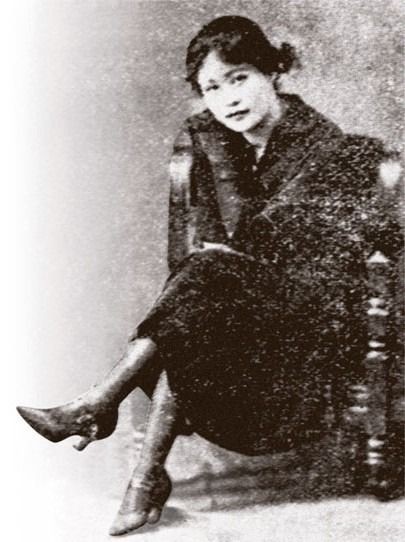

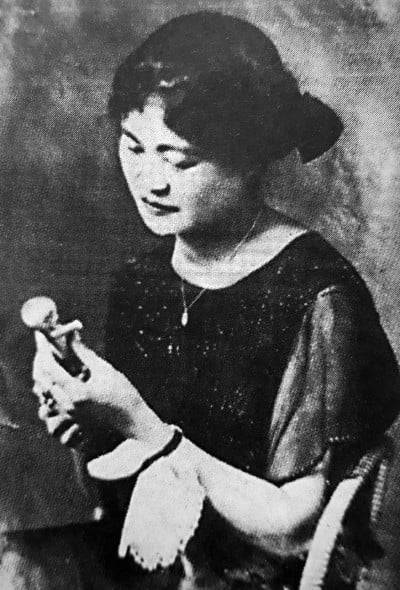
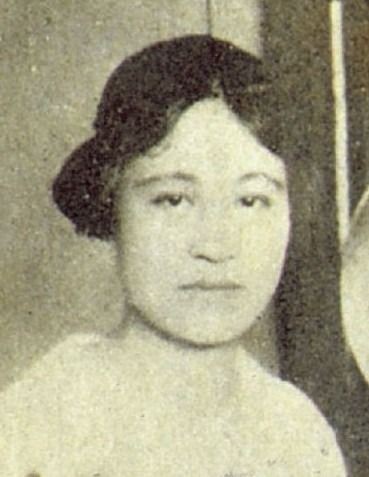
Yun Sim Deok was a Korean singer and was the country's first professional soprano.
Yun's most famous recording, 1926's "Hymn of Death," is considered the first "popular"(yuhaeng changga) Korean song was recorded in Osaka by the Japanese Nitto recording company, with Yun's sister accompanying her on piano.
⚠️ WARNING MATURE CONTENT ⚠️
(Mention of Self Harm)
There have been 2 films made about Yun. The first is a 1969 film titled Yun Sim-Deok, directed by An Hyeon-cheol (안현철). The second was a 1991 film called Death Song. The film won numerous awards in South Korea, including Best Film at the 1991 Blue Dragon Film Awards and the 1991 Chunsa Film Art Awards.
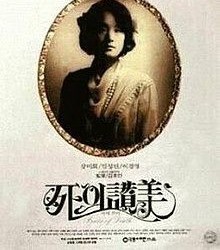
Also, a television series was also made in 2018 titled The Hymn of Death, which told the story of Yun and her lover Kim U Jin.

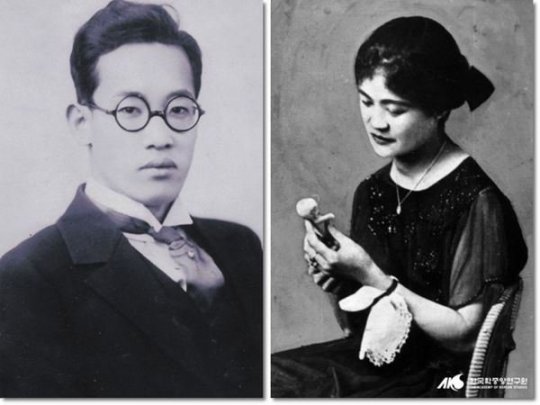
After both of their deaths on the 4th Augest 1926, the shocking news caused a sensation in Korea, and Yun's 1926 recording of "Hymn of Death" (사의 찬미; also called "Death Song") sold a record 100,000 copies following her death.


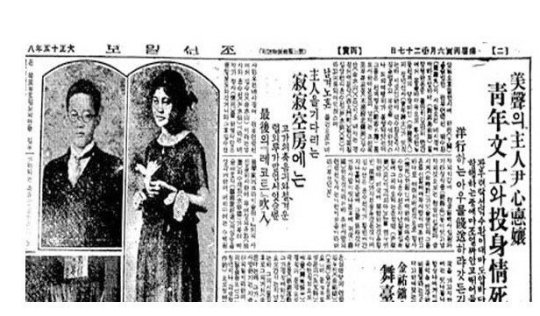
Source: https://en.m.wikipedia.org/wiki/File:Yun_Sim-Deok_-_In_Praise_of_Death.ogg
@anemoiawithatouchofobsession
#The Hymn of Death#Yum Sim Deok#Kim U Jin#Death Song#Kdrama#1920s#Historical#Imperial Japan#photography
17 notes
·
View notes
Text
10 Characters That Make Me Feel Things
Tagged by @lj-loveletters thank you❤️❤️
in no special order:
1. Flynn Carsen - The Librarians
2. Lee Rang - Tale of the Nine-Tailed
3. Ji Eun Tak - Goblin
4. River Song - Doctor Who
5. Im Eun Seob - When the Weather is Fine
6. Elinor Dashwood - Sense and Sensibility by Jane Austen
7. Ahn Jeongwon - Hospital Playlist
8. Sung Deok Sun - Reply 1988
9. Alex Clairmont-Diaz - Red White and Royal Blue by Casey McQuiston
10. Jonathan Sims - The Magnus Archives
#i feel like this is such a random list lol#I've been revisiting stuff can u tell#anyways thanks for tagging me! these are always very fun💓#tag game#tagged
1 note
·
View note
Text
The Matchmakers Episode 7 English Sub - Full Episodes

The Matchmakers Episode 7 English Subtitles
Sim Jung Woo is an intelligent and handsome young man. He was the youngest to place first in the state examination, but he was picked to become the princess' husband. During their wedding ceremony, the princess suddenly died. Sim Jung Woo's life changed and he became the most unfortunate man. According to the Joseon period custom, he is not able to take the government post and he can't remarry. He then becomes involved with Jung Soon Deok. Jung Soon Deok is a widow whose late husband was the second son of the first vice-premier. She secretly leads another life under the pseudonym of Yeo Joo Daek. As Yeo Joo Daek, she works as a matchmaker and also peddler of women's items like cosmetics and accessories. She is the best matchmaker in the capital city of Hanyang. Sim Jung Woo and Jung Soon Deok become involved with each other and they try to get older single men and women to marry as matchmakers. (Source: AsianWiki)
⬇️⬇️Watch The Matchmakers Episode 7 Eng Sub - Full Episodes⬇️⬇️
Website : https://dramasian.xyz/search/The+Matchmakers
Native Title: 혼례대첩
Country: South Korea
Episodes: 16
Aired: Oct 30, 2023 - Dec 19, 2023
Aired On: Monday, Tuesday
Original Network: KBS2, Viki
Duration: 1 hr. 10 min.
Content Rating: 15+ - Teens 15 or older
Also Known As: The Wedding Battle , Marriage Battle , The Battle of Marriage , Wedding Contest , Sending Me to You , I Send Myself to You , Hoonryedaecheop , Neoege Nareul Bonaenda , 너에게 나를 보낸다 , The Matchmaker
Director: Hwang Seung Gi
Screenwriter: Ha Soo Jin
Genres: Historical, Comedy, Romance
#Matchmaking#Joseon Dynasty#Matchmaker Female Lead#Grumpy Male Lead#Blunt Male Lead#Matchmaker Male Lead#Widow Female Lead#Widower Male Lead#Extroverted Female Lead#King Supporting Character (Vote or add tags)
1 note
·
View note
Photo









guimoon: the lightless door (2021) dir. sim deok-geun
1 note
·
View note